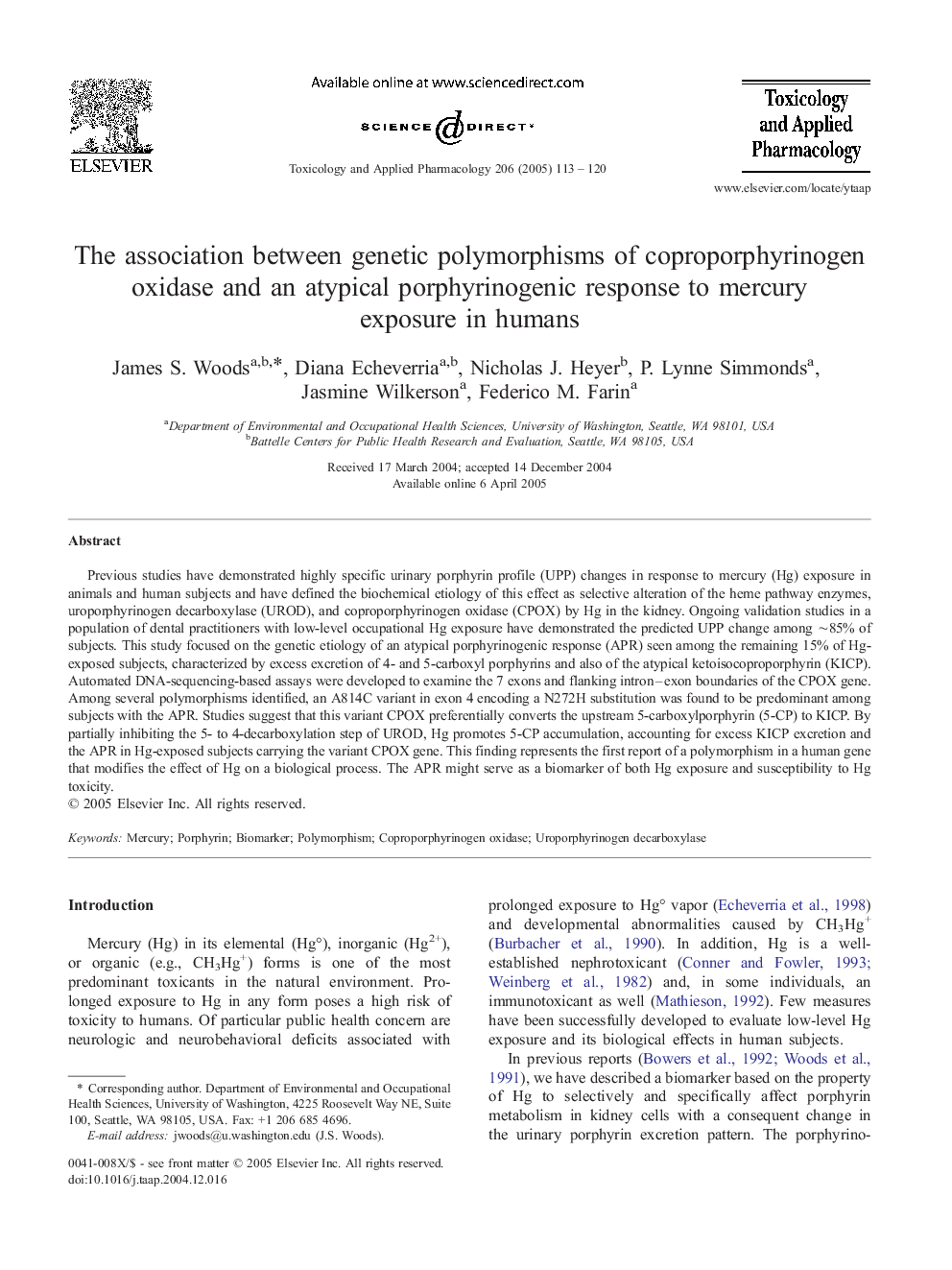| Article ID | Journal | Published Year | Pages | File Type |
|---|---|---|---|---|
| 9018180 | Toxicology and Applied Pharmacology | 2005 | 8 Pages |
Abstract
Previous studies have demonstrated highly specific urinary porphyrin profile (UPP) changes in response to mercury (Hg) exposure in animals and human subjects and have defined the biochemical etiology of this effect as selective alteration of the heme pathway enzymes, uroporphyrinogen decarboxylase (UROD), and coproporphyrinogen oxidase (CPOX) by Hg in the kidney. Ongoing validation studies in a population of dental practitioners with low-level occupational Hg exposure have demonstrated the predicted UPP change among â¼85% of subjects. This study focused on the genetic etiology of an atypical porphyrinogenic response (APR) seen among the remaining 15% of Hg-exposed subjects, characterized by excess excretion of 4- and 5-carboxyl porphyrins and also of the atypical ketoisocoproporphyrin (KICP). Automated DNA-sequencing-based assays were developed to examine the 7 exons and flanking intron-exon boundaries of the CPOX gene. Among several polymorphisms identified, an A814C variant in exon 4 encoding a N272H substitution was found to be predominant among subjects with the APR. Studies suggest that this variant CPOX preferentially converts the upstream 5-carboxylporphyrin (5-CP) to KICP. By partially inhibiting the 5- to 4-decarboxylation step of UROD, Hg promotes 5-CP accumulation, accounting for e xcess KICP excretion and the APR in Hg-exposed subjects carrying the variant CPOX gene. This finding represents the first report of a polymorphism in a human gene that modifies the effect of Hg on a biological process. The APR might serve as a biomarker of both Hg exposure and susceptibility to Hg toxicity.
Keywords
Related Topics
Life Sciences
Environmental Science
Health, Toxicology and Mutagenesis
Authors
James S. Woods, Diana Echeverria, Nicholas J. Heyer, P. Lynne Simmonds, Jasmine Wilkerson, Federico M. Farin,
